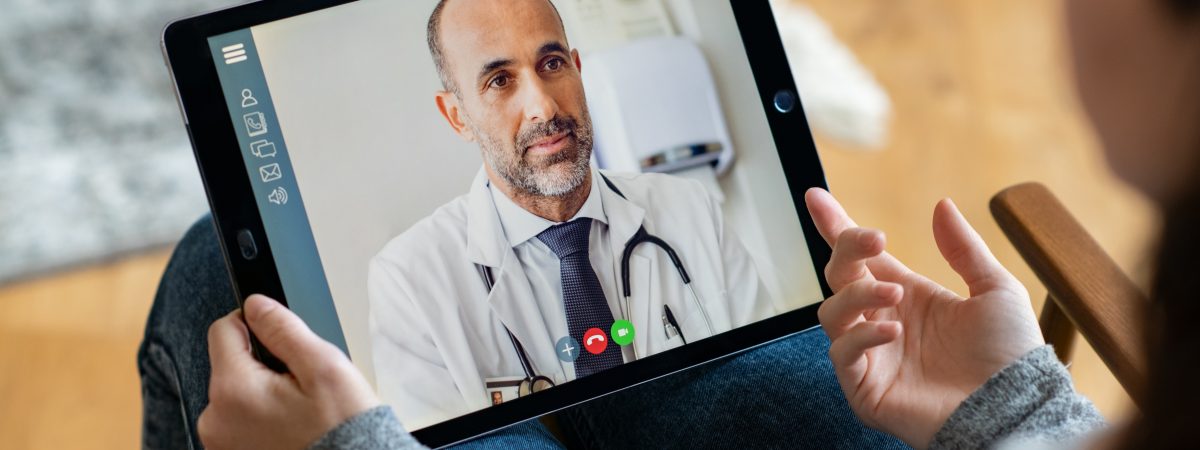
In 2020, the script was completely rewritten for healthcare. The coronavirus pandemic forced healthcare institutions and providers to adjust on the fly. Not only learning how to battle a devastating virus, but also determining how to safely deliver routine care and checkups to patients. This has been a major concern of many healthcare professionals, who fear that general care and patient monitoring have slipped because of COVID-19 concerns by individuals and a lack of healthcare resources.
To combat this problem, telehealth has been pushed to the forefront of medical care. What was once just a growing sector of healthcare, has been placed on center stage in 2020. Every age group, in areas all across the country, has been encouraged to use telehealth services as their first choice in physician communication — even Medicare beneficiaries.
Prior to the pandemic, roughly 13,000 Medicare patients were using telehealth services every week. By April of 2020, that weekly number had increased to over 1.5 million! Since then, at least 10 million Medicare beneficiaries have used telehealth services in 2020.
So what does the future look like for Medicare telehealth services post-pandemic?
Reasons Why Medicare Telehealth Is Beneficial
Telehealth has been an up-and-coming service in recent years. Prior to 2020, the use of telehealth was sporadic and uncommon, often only being used in rare cases as many individuals were unaware of the healthcare option, didn’t understand the functionality, or simply preferred face-to-face visits. The dramatic rise of telehealth use was not expected until further into the decade as education campaigns could be mounted and infrastructure needs could be further solidified.
However, as the COVID-19 pandemic intensified, telehealth services were deployed on a massive scale in order to provide care when physical and safety limitations prevented in-person visits. Here are a few major reasons why telehealth is beneficial to Medicare aged patients:
Vulnerable Population Protection
When contagious, high-risk diseases like COVID-19 are spreading through a community, vulnerable populations are the most likely to experience critical outcomes if exposed. Individuals with pre-existing conditions, weakened immune systems, and other health complications need to take steps in order to mitigate the risk of contracting the disease. To better control an individual’s health environment, telehealth services enable vulnerable populations to receive attention and care from healthcare providers from the safety of their own homes. This reduces the possibility of infection that comes with vulnerable populations moving through a community to receive in-person medical care.
Better Health Tracking
A major issue facing Medicare-aged individuals is receiving regular care. Healthcare providers often struggle to see patients as often as necessary due to a variety of factors such as transportation issues or existing illness. If an individual is already feeling sick or lacking a ride to the doctor’s office, they are likely to miss their appointment. When physicians are not able to have proper patient visibility and routine or acute visits are missed, healthcare quality often diminishes for that individual. Through telehealth services, patient-provider communication is more accessible and convenient than before. Due to this, Medicare patients can routinely connect with their doctors without certain factors derailing their care, ultimately improving their healthcare outcomes and quality of life.
Opens Up Speciality Care Options
In many cases, Medicare patients have limited specialty care options, especially when individuals live in more rural, less densely populated areas. While what specialty care can do via virtual visits is somewhat condensed in scope, it still provides individualized care that is necessary for many patients. Specialties such as cardiology and psychiatry are two areas where telehealth visits can greatly benefit Medicare patients. Through telehealth services, individuals have more privacy in the care they receive as they do not need to leave their homes. They also are opened up to a larger network of physician possibilities as they are not tied to a specific geographic area. Ultimately, if in-person specialty care is required, an individual’s telehealth physician can recommend local solutions and referrals.
Why Medicare Telehealth Will Stay
Over the course of the COVID-19 pandemic, the federal government has made large emergency expenditures to open up telehealth services to Medicare beneficiaries, in an effort to better protect these vulnerable populations. Congress is looking for bipartisan support to pass legislation that further continues funding for telehealth services for Medicare patients.
Many Medicare patients have been pleased with the convenience and safety provided by the new healthcare option, especially given the current risks associated with the current healthcare environment.
On average, 10,000 Americans turn 65-years-old, every day. This means the potential of 10,000 new Medicare beneficiaries. As younger generations gradually enter Medicare age, their familiarity with technology will make the use of telehealth more popular and a preferred method of care.
There is no substitute for an in-person, face-to-face visit with a physician. That level of care cannot be replicated or replaced. However, 2020 illustrated that other wide-scale healthcare options are necessary to best serve and care for all populations of people. Telehealth offers new flexibility and accessibility to Medicare patients that hasn’t always been possible. The use of Medicare telehealth stands to grow in the years and decades to come.